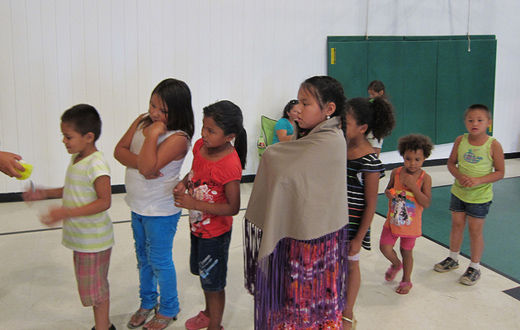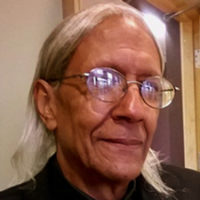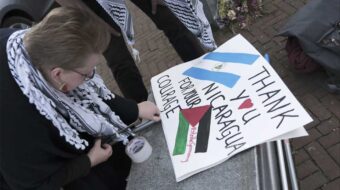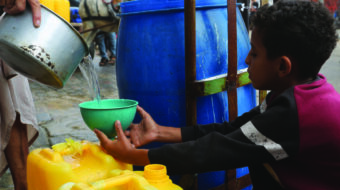
I must amplify on a report that appeared in People’s World’s column, This Week In Indigenous News. The reference opened up a subject, a matter of basic survival, that needs to be addressed by all of America. This is the agonizing issue of suicide among American Indian youth, particularly on the Northern Plains. There have been five youth suicides on the Pine Ridge Indian reservation in South Dakota since December, and many other attempted suicides. The suicide attempts reportedly number 103 in this time frame. This is incredible. The suicide rate of Native young people on the reservations is the highest in the Western Hemisphere.
In February, Oglala Sioux President John Yellow Bird Steele declared a state of emergency because of the youth suicides. Reservation spokespersons at Pine Ridge cite poverty as a major factor for the suicides. All of the other cited reasons are directly the spinoffs of poverty such as family dysfunction, drug and alcohol abuse, domestic violence, emotional and physical neglect of the young.
Hideous racism is also a major factor in this crisis. To cite an example: A 12-year-old December victim of suicide had been among a group of young Indian females on an overnight trip to Rapid City, S.D. While there the group overheard a white woman call them “filthy Indians” as they passed through a hotel lobby. Commenting on this incident a longtime Lakota activist said, “Our kids today just want to die because they are just sick of all this oppression.” Poverty and racism is proving to be a deadly combination for Indian young people.
The unemployment rate on Pine Ridge is still 80-90 percent. In particular these young people need jobs. The federal government has it within its power to do so, with jobs programs, but so far just looks the other way.
The alcoholism rate is said to hover at 80 percent. Life expectancy on Pine Ridge is the lowest in the entire United States and is the second lowest in the entire Western Hemisphere (only Haiti has a lower life expectancy).
This is genocide, pure and simple. Genocide engendered by a vicious racism and abject poverty, which the U.S. government takes no effective steps to combat.
The suicides are the product of the policy of extermination against Native Americans followed openly by the federal government until the onset of the 20th century, at which point genocide became more subtle. It continues in this form to the present day. The intergenerational trauma felt by all Native people, but particularly by Indian youth, is the result of the historical policy of genocide exemplified by the endless massacres, the forced removals and military campaigns that continued to the end of the 19th century, culminating in the Wounded Knee Massacre. All of these memories resonate in the minds of our young people in one form or another.
Couple this with the present-day racism most openly shown in the outrageous treatment of Lakota children at a January hockey game in Rapid City, which only reinforces intergenerational trauma, and we have all the ingredients for anger, hopelessness and despair that results in suicide. That for Native people is still genocide. Where is the federal government to take steps for justice for the most innocent of our people, our youngsters, whose dream day that January 24 was turned into an unforgettable, racist nightmare? Apparently, so far, nowhere to be found. This is both saddening and angering.
But the suicides go on – young people hanging themselves at such a rate that a week without a suicide is now considered a blessing on many reservations. These young people are hanging themselves with the rope of joblessness, the rope of racism, the rope of despair, the rope of low self-esteem.
As bad as some would paint reservations there is one thing from which children are shielded there – that is the specter of malevolent racism. On reservations Indian children don’t think of themselves as minorities for obvious reasons. There is no racial profiling for obvious reasons. Again, as bad as reservations are painted from cold statistics, this writer has always felt a real sense of security and comfort, not having to be concerned about daily racism, living on reservations.
But, again, suicides have quickened the grim specter of death stalking Indian people. A literal youth suicide epidemic is sweeping Indian Country, with American Indian teens and young adults killing themselves at a rate, at its lowest, of three times that of other U.S. youth; in some parts of the country the suicide rate is 10 times to 19 times that of the rest of American youth. From Alaska to Arizona, tribes near and far have declared states of emergency.
Suicide figures vary somewhat from reservation to reservation, but the most distressing numbers come from the Northern Plains, Alaska and parts of the Southwest. In Alaska the suicide rate of young Indian males is nive times that of other young males in the U.S., while the suicide rate for young Native females is 19 times that of other young females in the U.S., according to the Alaska native Tribal Health Consortium.
The historical trauma felt by Native youth is fueled by generational grief at the loss of land, language and tradition. Researchers have concluded that large numbers of Indian adolescents think daily of historic sorrows. The historical background must be taken into account. Of the 371 treaties signed by the U.S. government with American Indian nations, each and every one has been broken. Needless to say the treaties guaranteed, but did not adequately deliver, health care, education and housing. Indian youth are bearing the brunt of this ignominious legacy.
There must be an end to this poverty and racist-spawned crisis. When will the federal government take action to make a difference in this huge, ongoing disaster?
Photo: Lakota children. Neeta Lind/Creative Commons












Comments